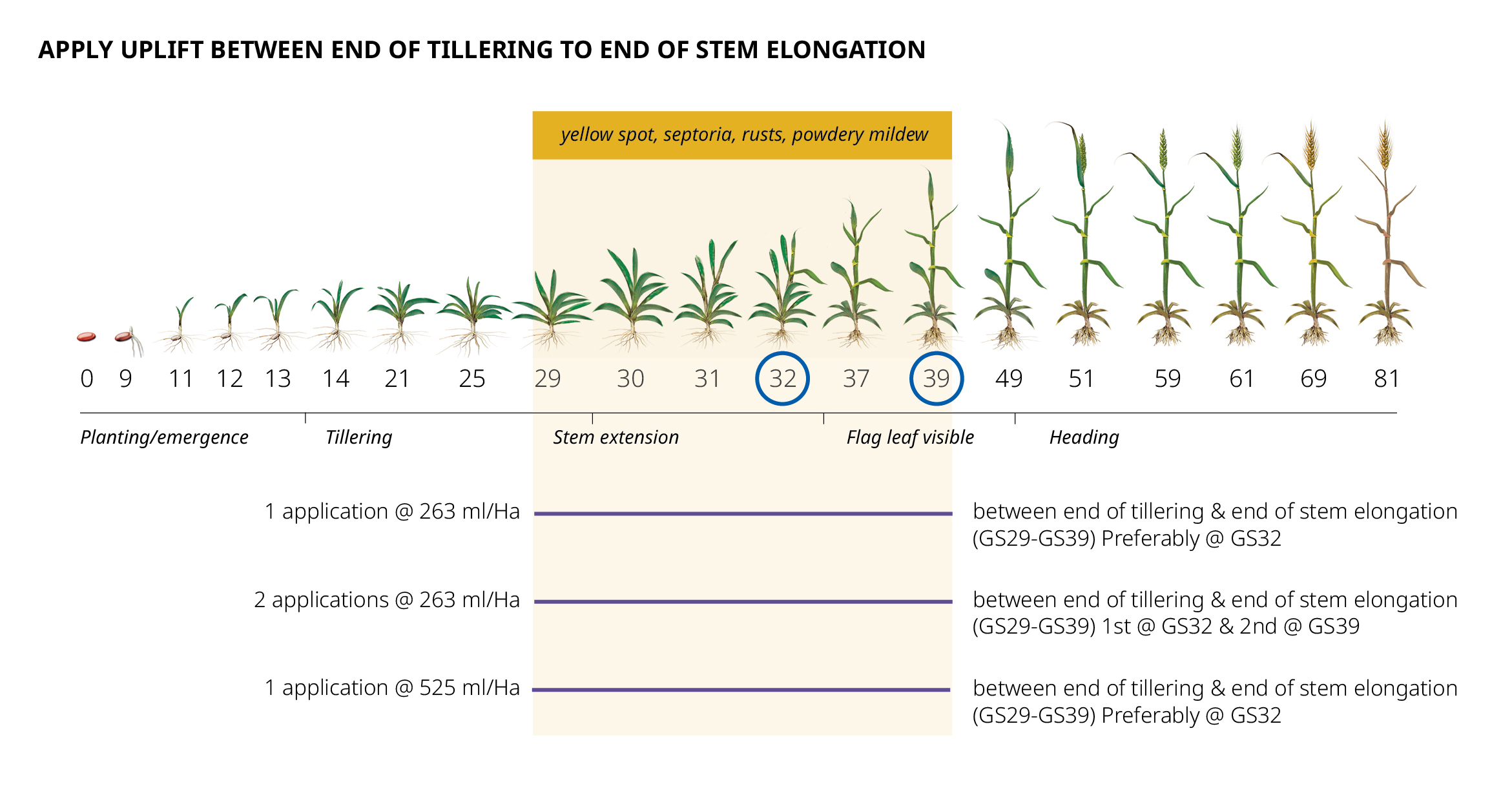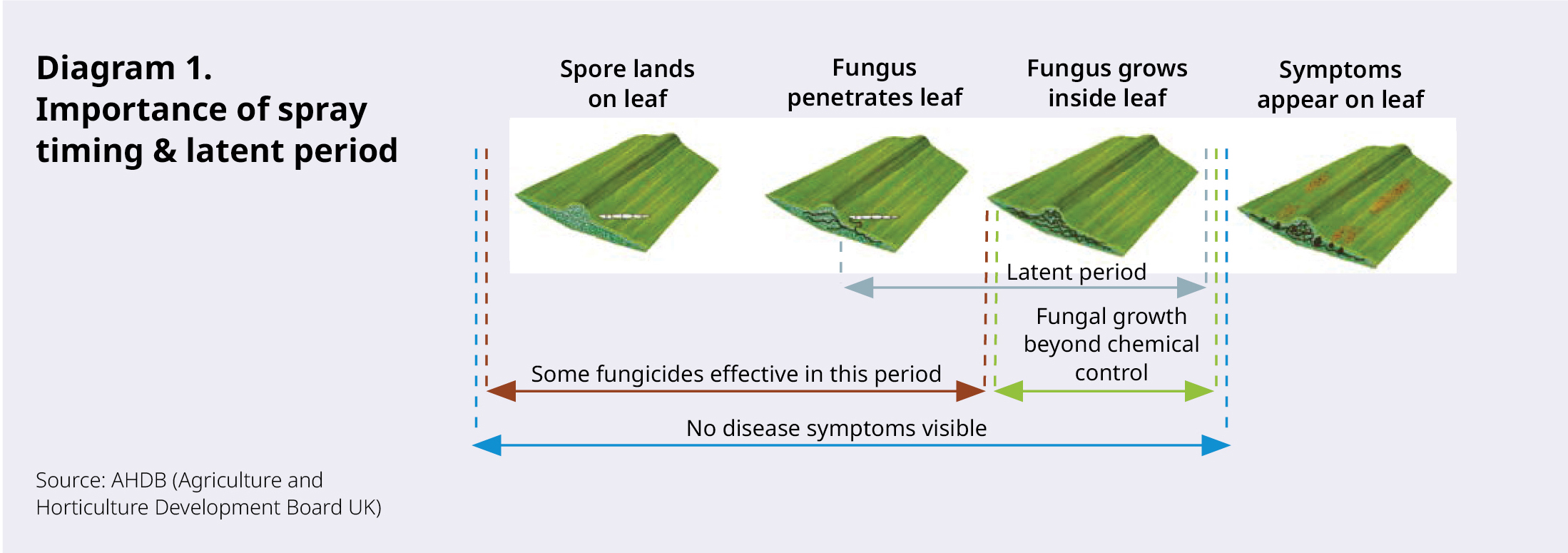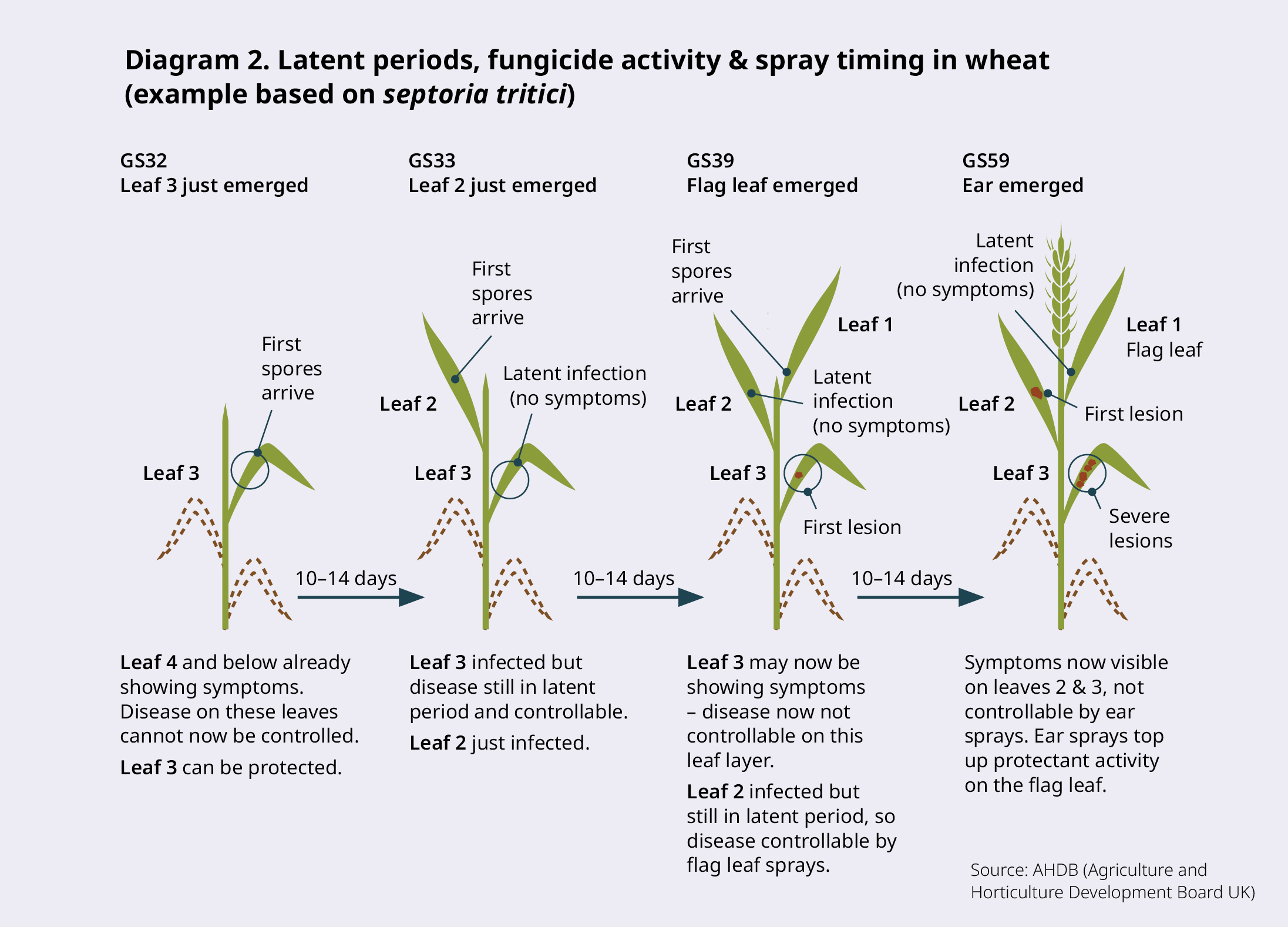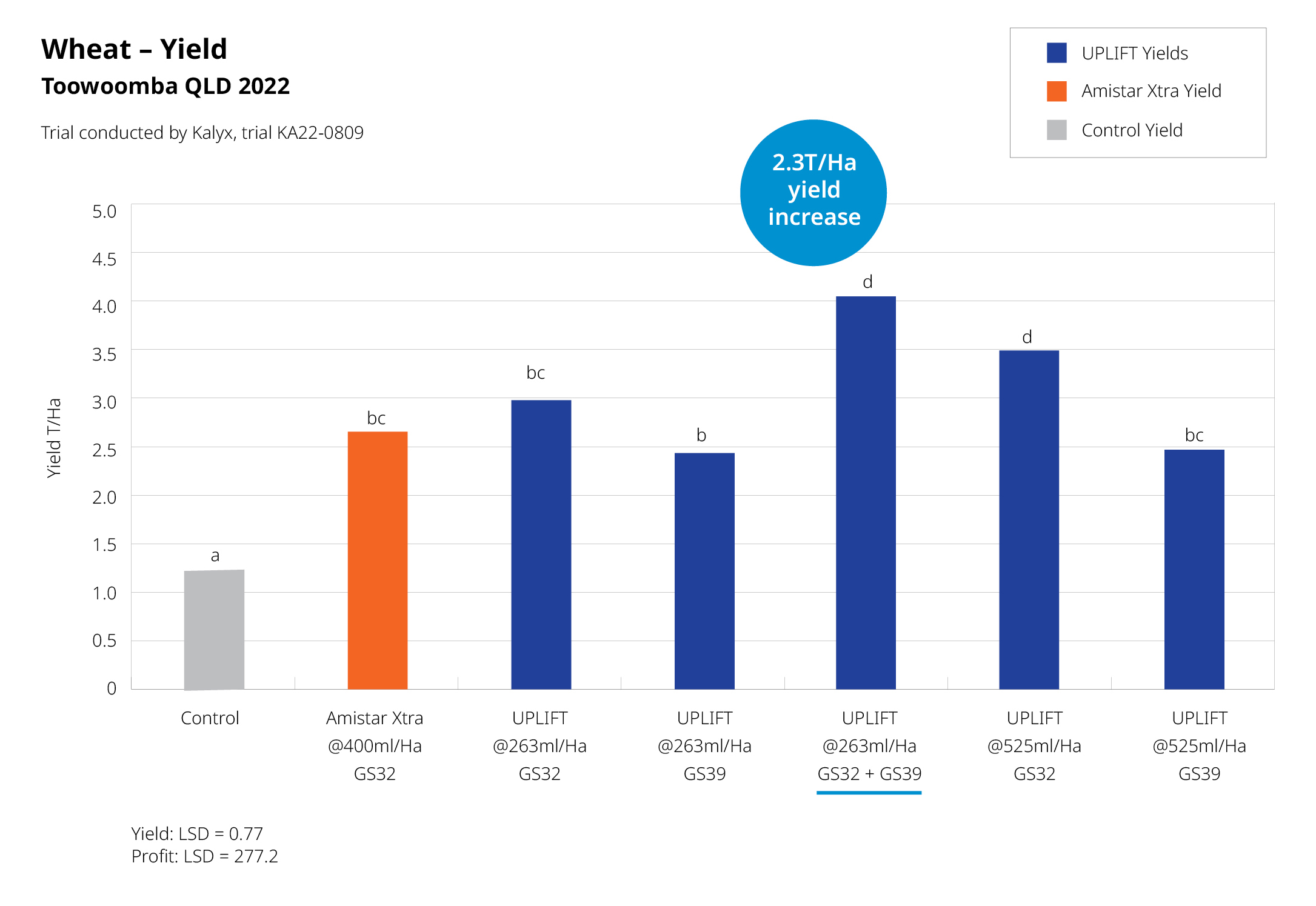Getting the timing of a fungicide spray right can have a significant impact on the disease severity in your cereal crop and the subsequent yield response.
Getting the timing of a fungicide spray right can have a significant impact on the disease severity in your cereal crop and the subsequent yield response.
Not managing foliar disease can accelerate the senescence of the top leaves of wheat and barley plants, which will lead to reduced yields. Some disease can also spread to the ears and grains which will affect grain quality.
In wheat and barley, the top 3 leaves plus ear/head contribute 95–97% of the final yield.
It is therefore vitally important to protect these important leaves and head/ear from damage by foliar diseases.
A trial conducted in 2022 shows the benefit of getting the timing and rate right using UPLIFT fungicide compared to a mistimed early low-rate spray.
In general, GS32 and GS39 fungicide timings give a yield response in wheat and barley. In contrast a spray before GS31 or after GS59 will give much smaller to no yield responses, although the GS59 spray is vitally important for protecting grain quality.

Applying UPLIFT fungicide prior to disease initiation can considerably reduce the formation of foliar diseases. Disease pressures during the season will determine if a 1, 2 or 3 spray strategy is required to protect the plant.
LATENT PERIODS
In protecting the plant’s leaves and ear it is important to understand the latent period of fungicides and how temperature can affect this (shorter under higher temperatures).
Different diseases have different latent periods.
- Powdery mildew / leaf rust is as short as 4–5 days
- Septoria tritici can be long as 14–28 days
Once the disease progresses too far into the latent period no fungicide at any rate will control the fungus, even when no visible symptoms are present.
Diagram 1. Importance of spray timing & latent period

Diagram 1 shows the importance in protecting the top 4 leaves and ear of the plant, the latent period of the disease and the impact of fungicides at different application timings.
An understanding of when different leaves develop on the plant helps in understanding when to spray the crop to protect the top 4 leaves and ear.
Diagram 2 shows how the latent period and growth crop stage impact the development of disease and indicates to timing of fungicides and what leaves will be protected.
Diagram 2. Latent periods, fungicide activity & spray timing in wheat (example based on septoria tritici)

SPRAY TIMING
In general, GS32 and GS39 fungicide timings give a yield response in wheat and barley. In contrast a spray before GS31 or after GS59 will give much smaller to no yield responses, although the GS59 spray is vitally important for protecting grain quality.
The timing of a fungicide spray can have a significant impact on the disease severity in a crop. UPLIFT has a perfect fit in your program to slot into the correct timing either as a single application or a split (2) spray application for the season.
Trial results following show the importance of timing in the control of stripe rust in a wheat crop on the top 3 leaves:
- GS32 spray reduced overall disease
- GS39 spray reduced it further
- the split GS32+GS39 applications reduced it the most
Graph: Wheat – Yield, Toowoomba QLD 2022

It is also important to note that some fungicides like UPLIFT, which contain azoxystrobin, also provide a canopy greening effect which can also lead to yield increases.
To help plants maximise yield and resist diseases it is also important to keep a crop healthy during grain fill (GS71-81) to help maximise fill and grain size.
Some important notes on fungicide timings:
- The spray windows for effective disease control are narrow for each spray timing GS32, GS39 & GS59 (head wash)
- A well-timed spray can avoid the need for higher rates or extra sprays
- The Zadok’s growth stage is often used for target sprays (GS32 & GS39) – But do not rely on the growth stage alone, as targeting the leaf emergence is more important
- The optimum timing is to spray the targeted leaf when it has just emerged
UPLIFT is a new broadspectrum fungicide for use in wheat and barley combining two highly active fungicides – strobilurin and triazole. Dual modes of action improve disease control and resistance management, providing excellent systemic and protective activity.